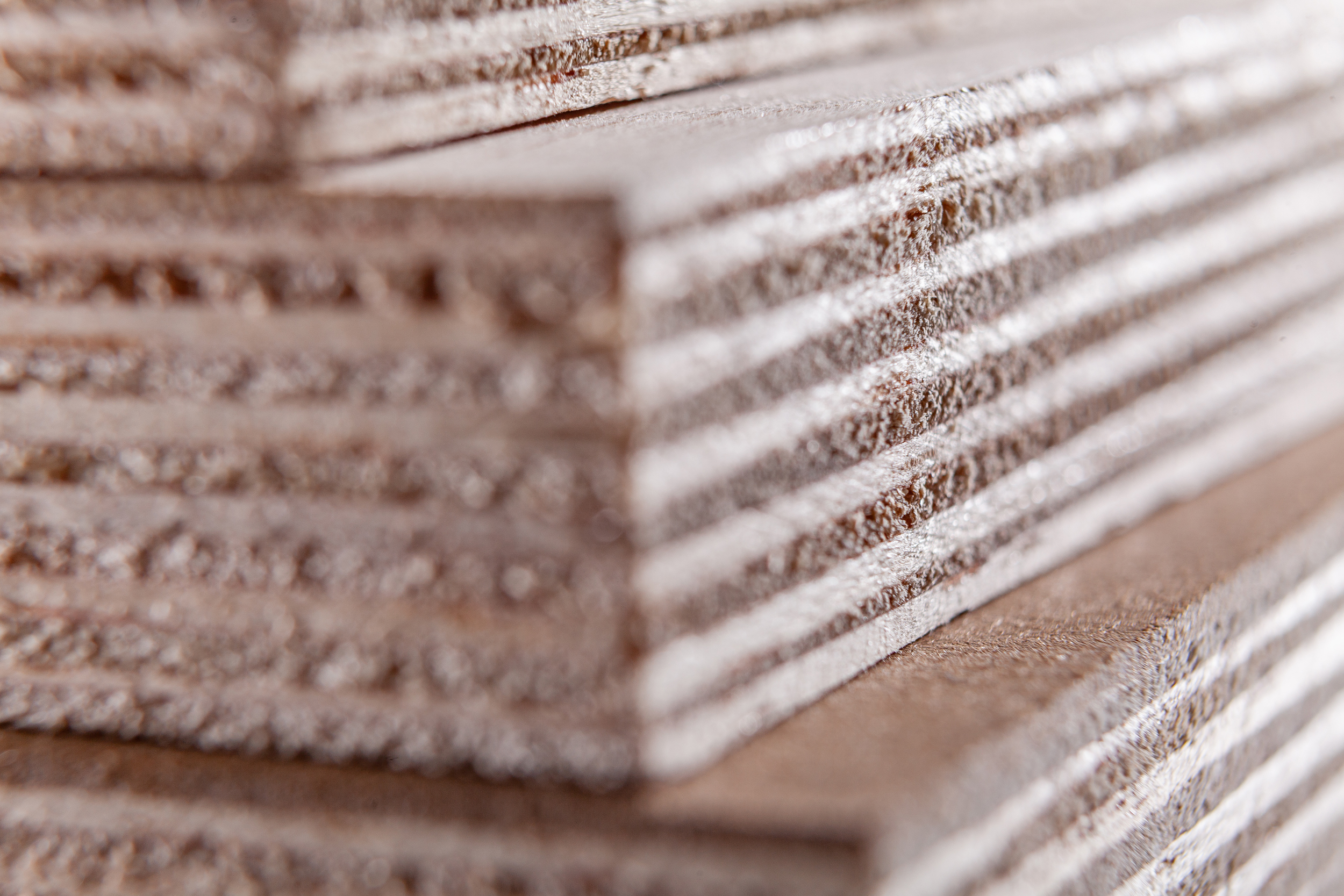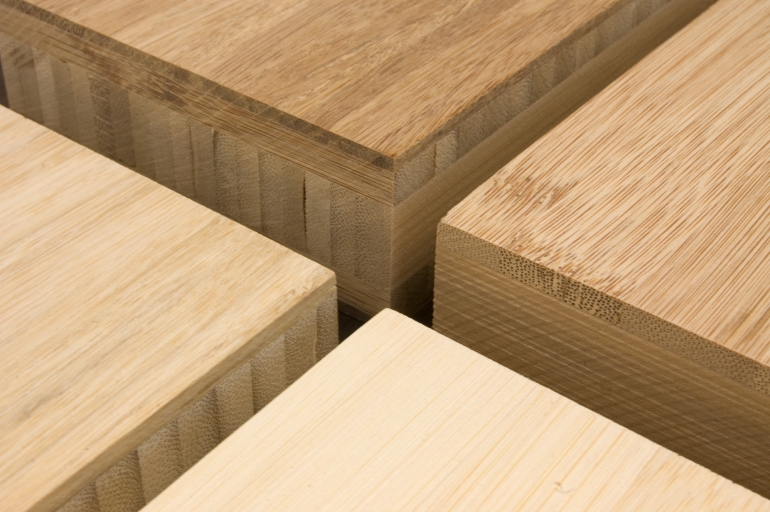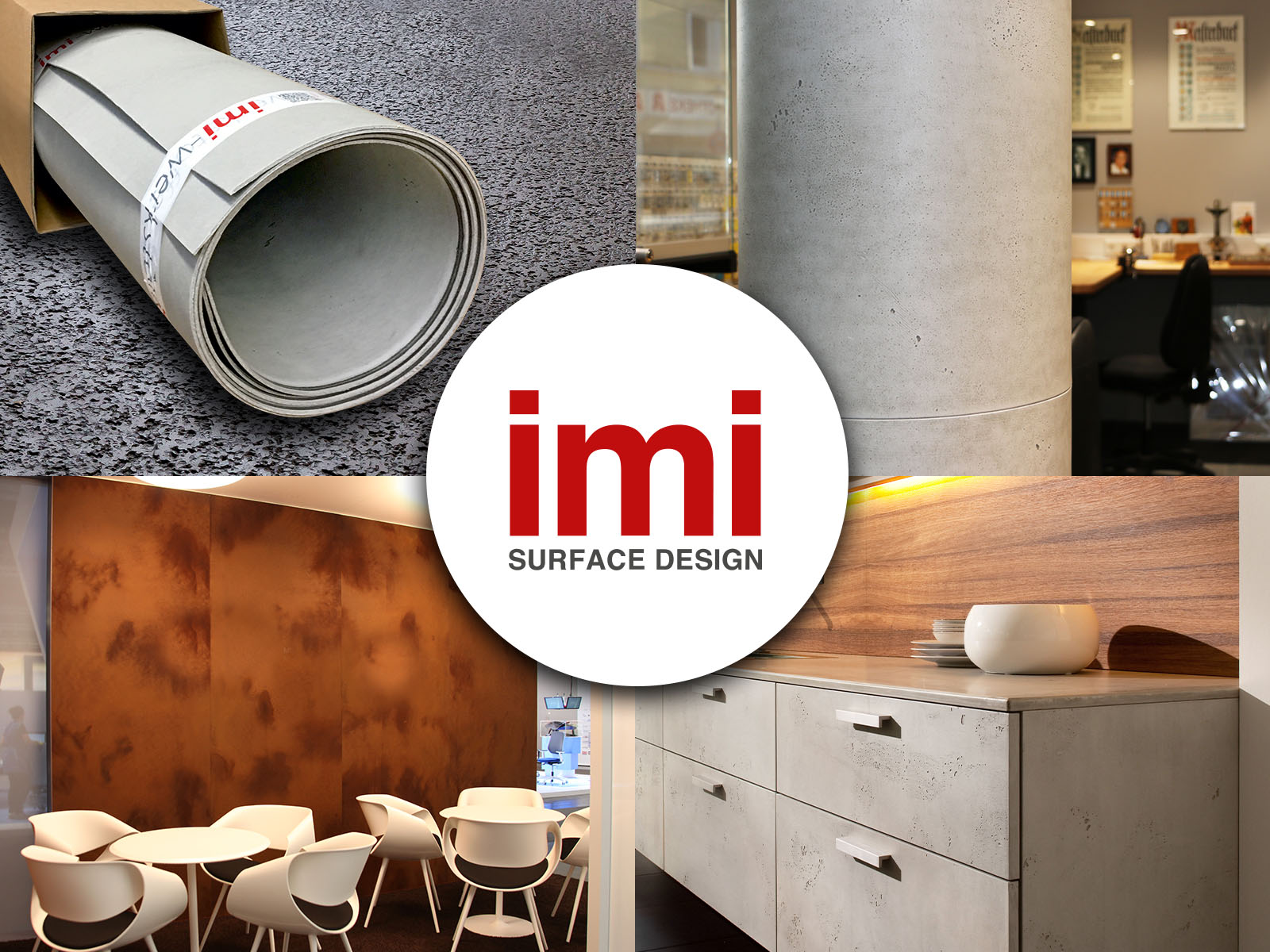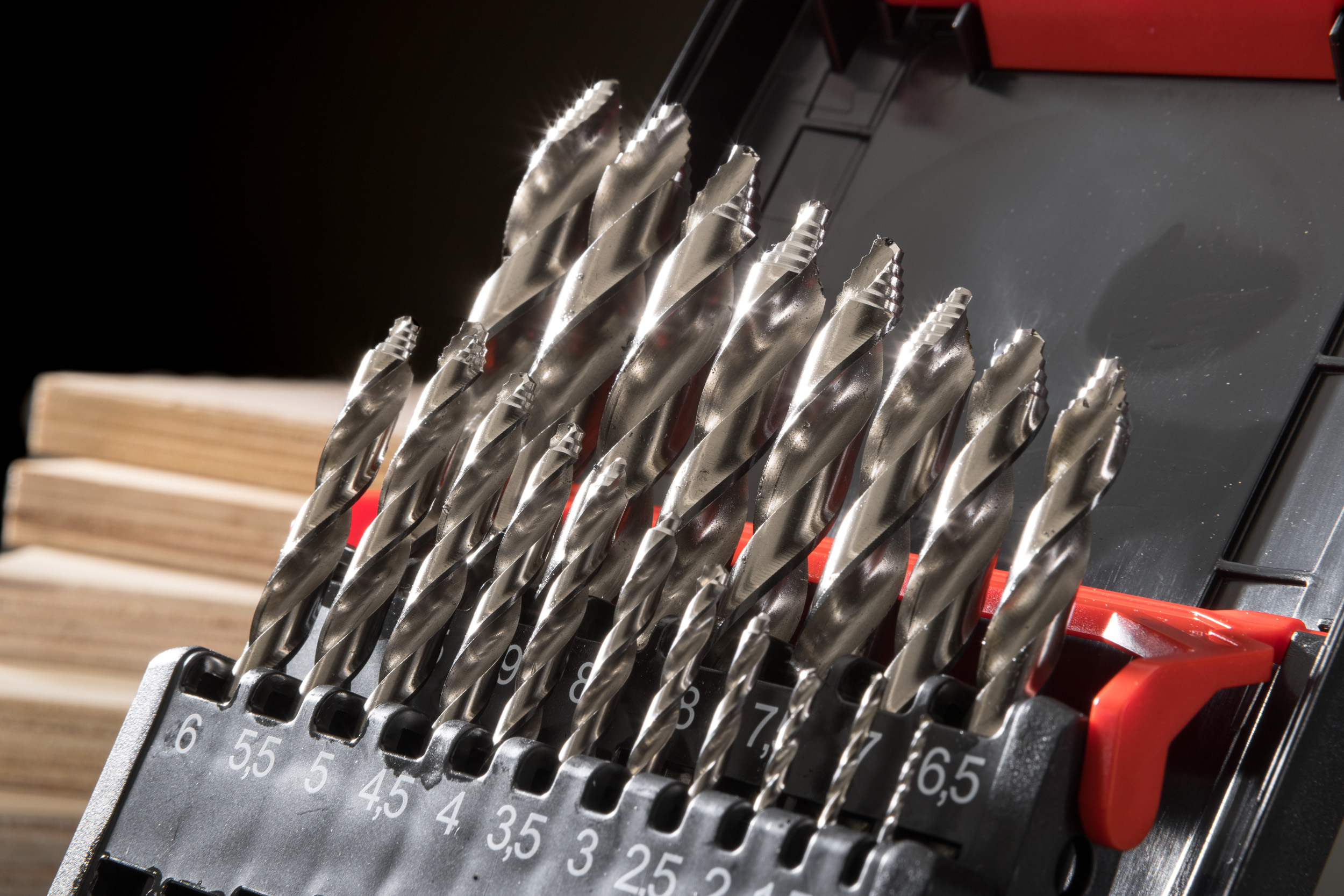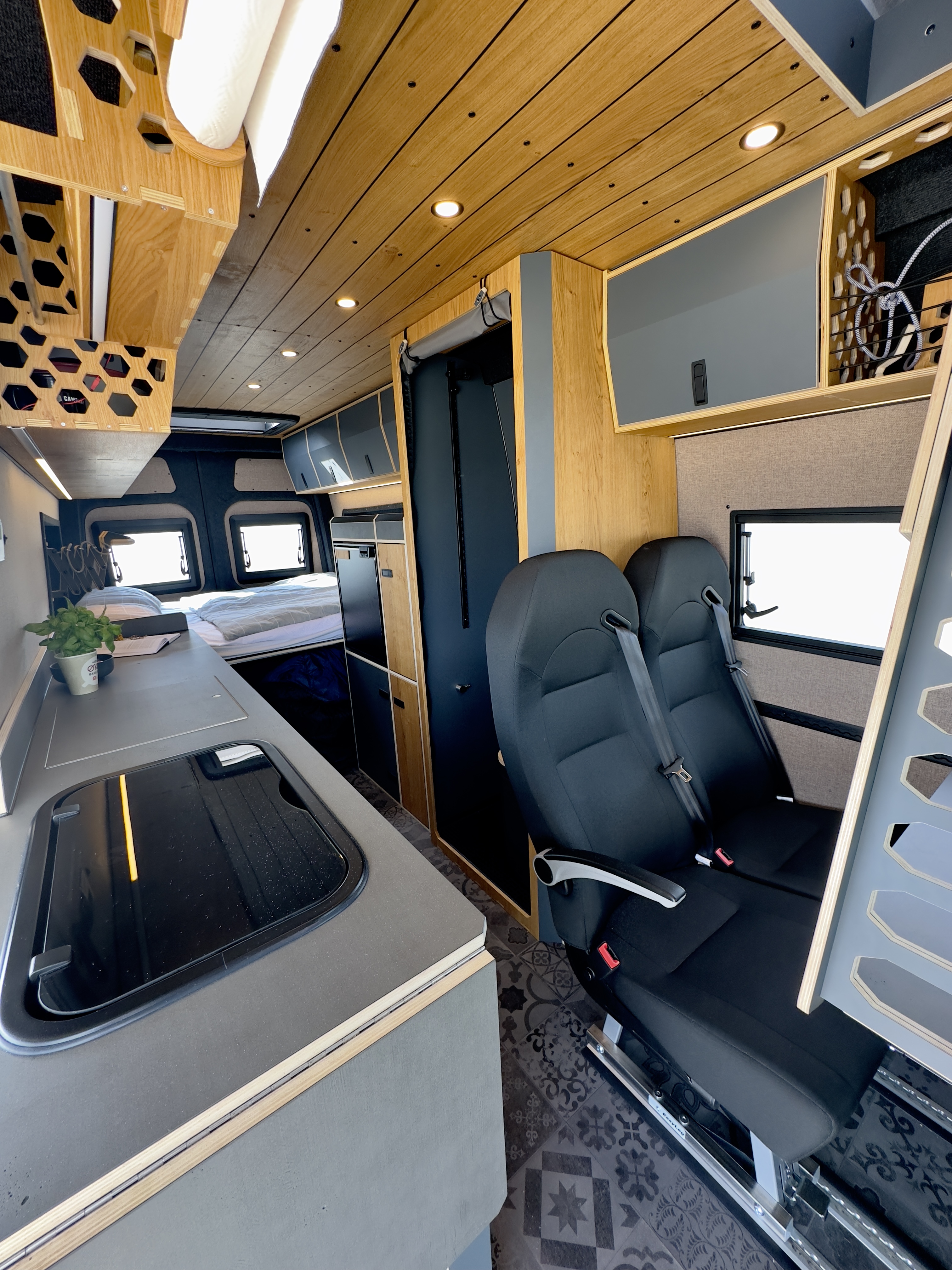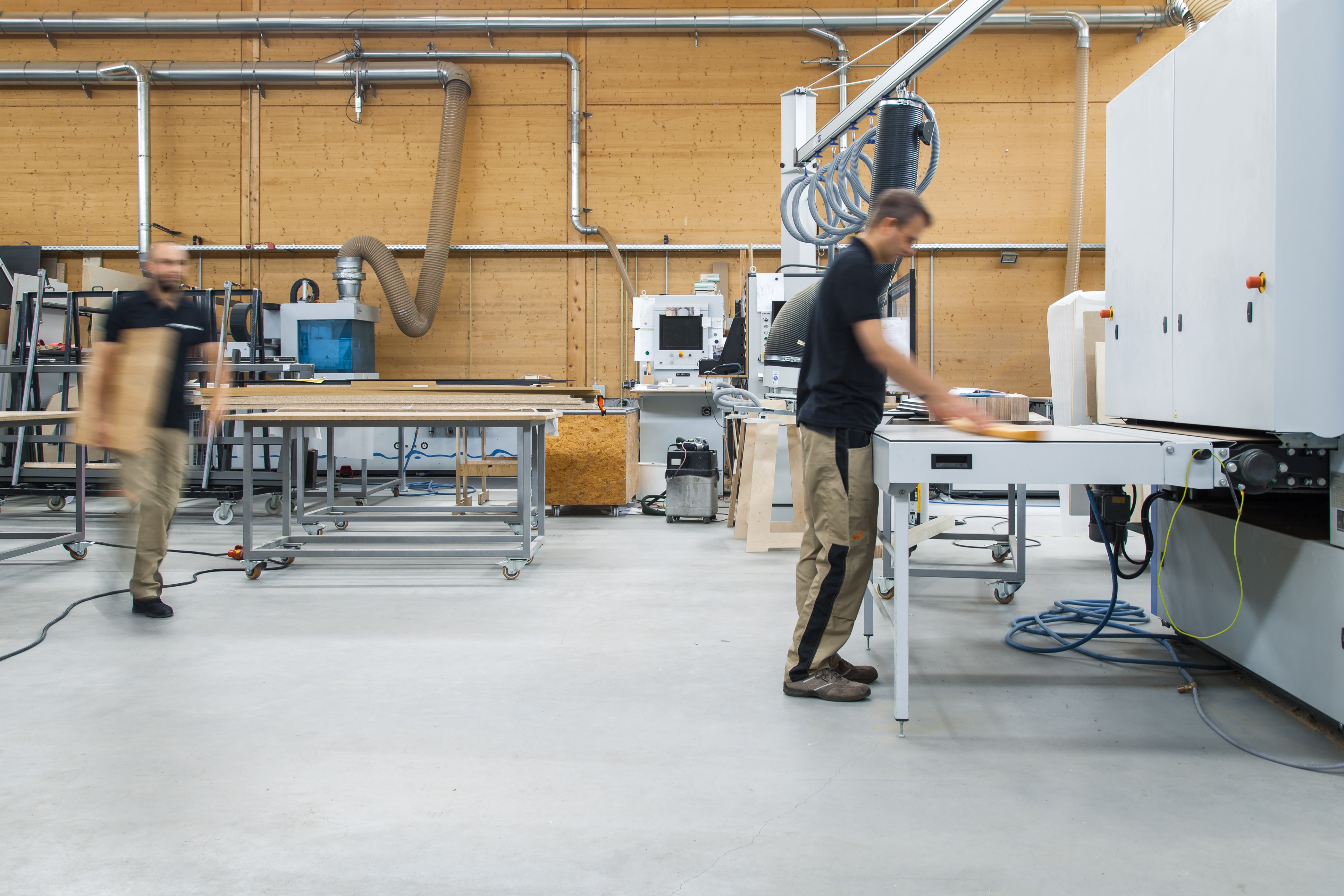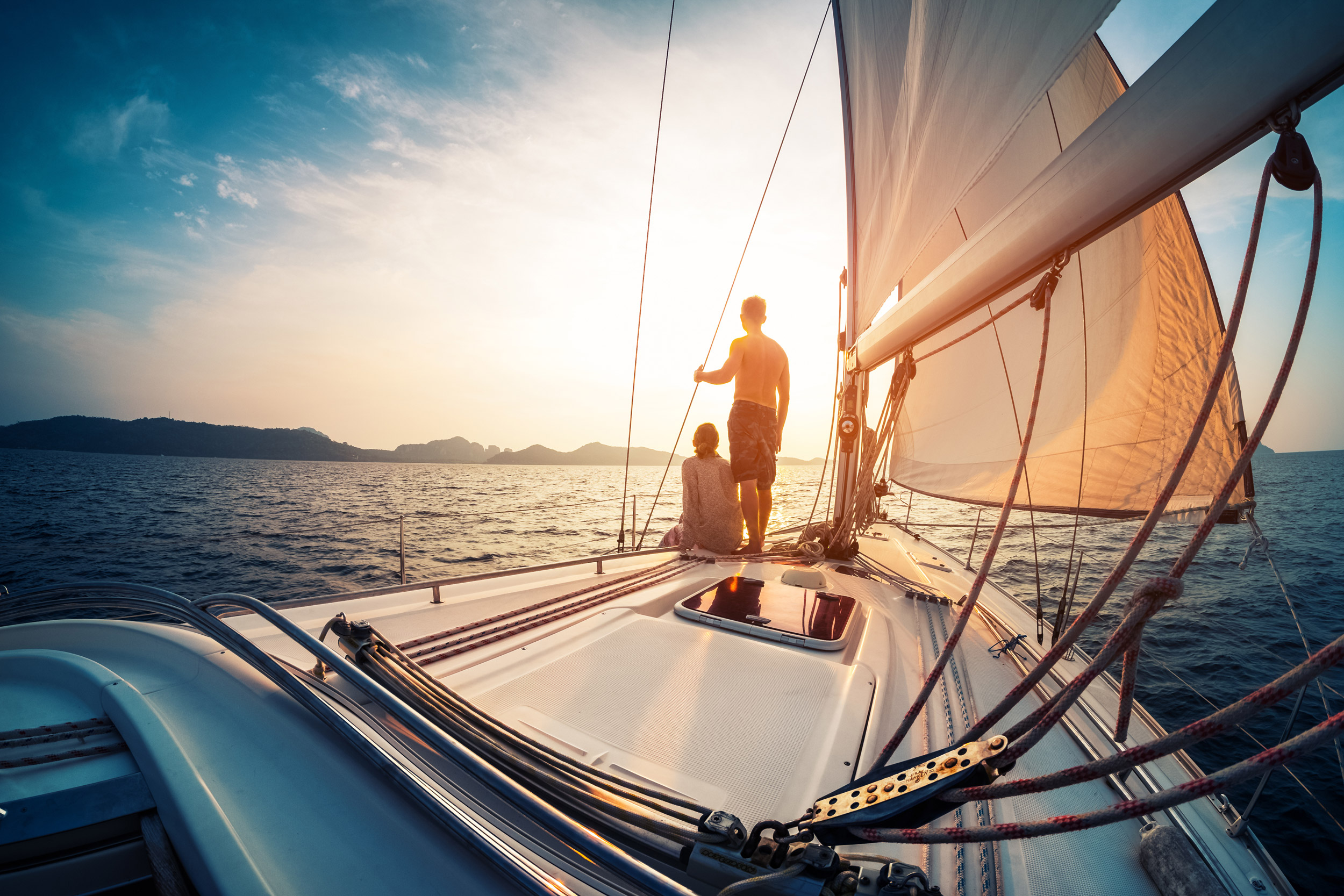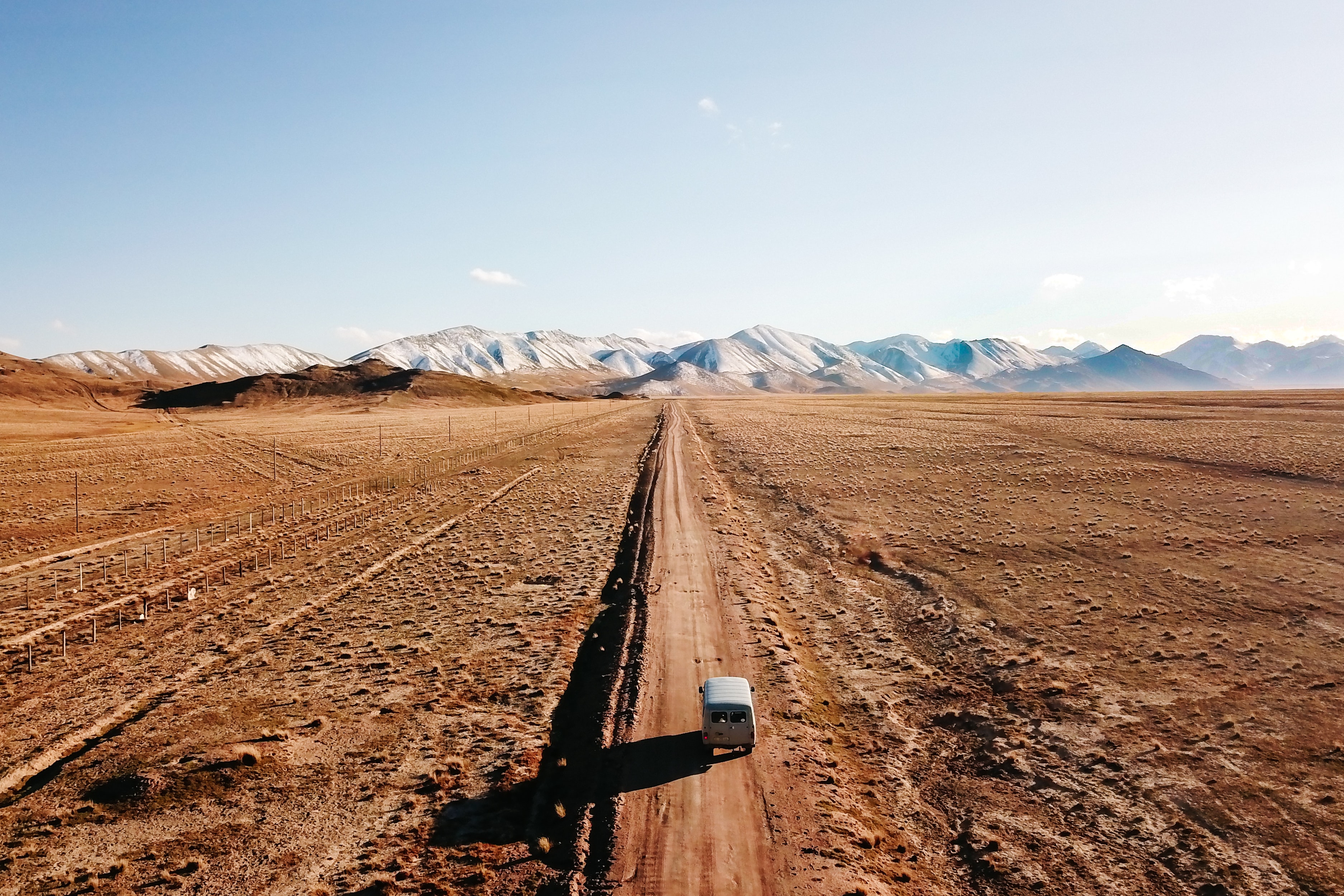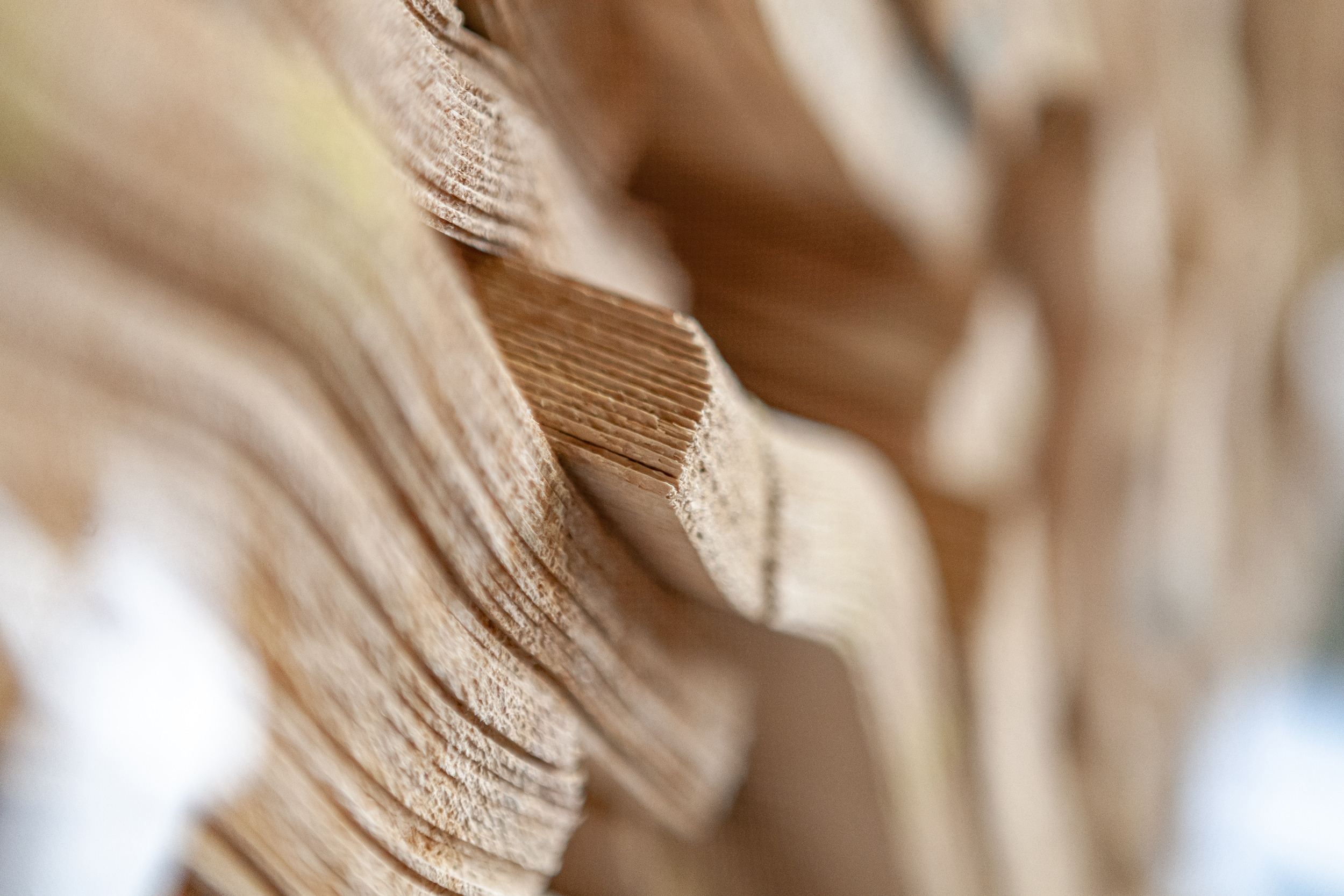
FAQ
On this page we have compiled information and answers to frequently asked questions about our lightweight panels. One or two tips are also included. Perhaps your question has already been answered after looking through it. If not, just get in touch with us.
Plywood or multiplex?
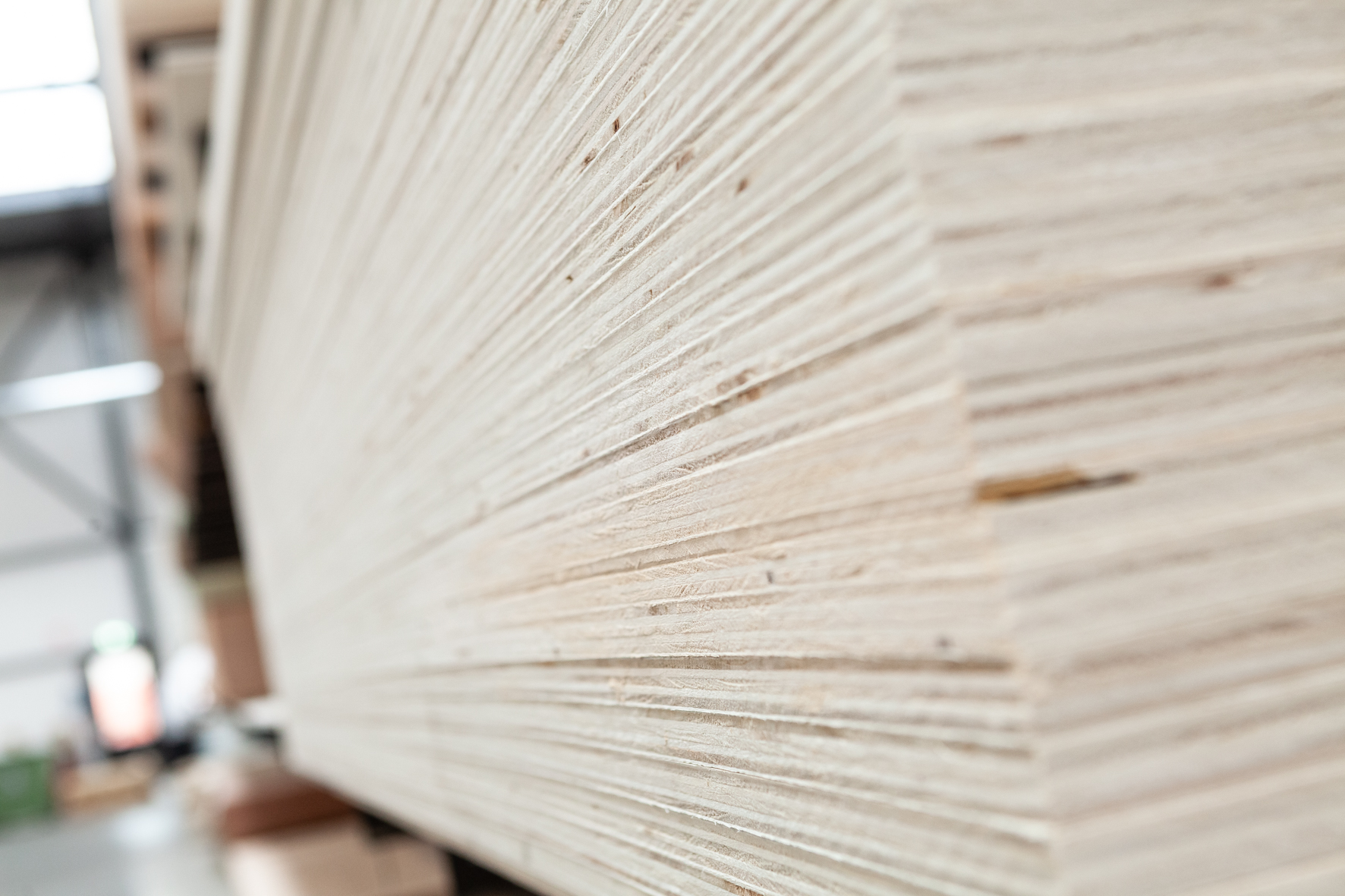
Contrary to popular belief, birch is not a multiplex panel and poplar is not automatically a plywood. A plywood board is a board made of cross-laminated veneer layers.
From a thickness of 12 mm and from 5 layers of veneer (middle layers) one speaks of a multiplex board (multilayer). The more centre layers a plywood has, the higher the board’s durability. This means that it does not become "crooked" as quickly. At the same time, the screw pull-out strength increases with each centre ply.
When choosing the right substrate material or the right finishing panels in van conversions and for interior panelling in camping buses, the gluing is important. With poplar plywood, this is usually not suitable for damp rooms and is therefore not the best choice for the climate, temperature and humidity fluctuations in motorhomes and caravans.
We often recommend our Queenply multiplex board with moisture-resistant gluing. You can find it in our online shop.
Why do we calibrate all our plywood and multiplex panels?

By calibrating to an accuracy of 0.2 mm (sanding the boards on both sides), we increase the surface smoothness of the panel, which is particularly noticeable with dark decors or extremely matt surfaces.
In addition, we reduce the thickness tolerance and ensure full-surface bonding of the carrier panel and HPL.
This guarantees perfect gap dimensions in furniture construction, less stress and less work.
White glue or PUR hotmelt bonding?
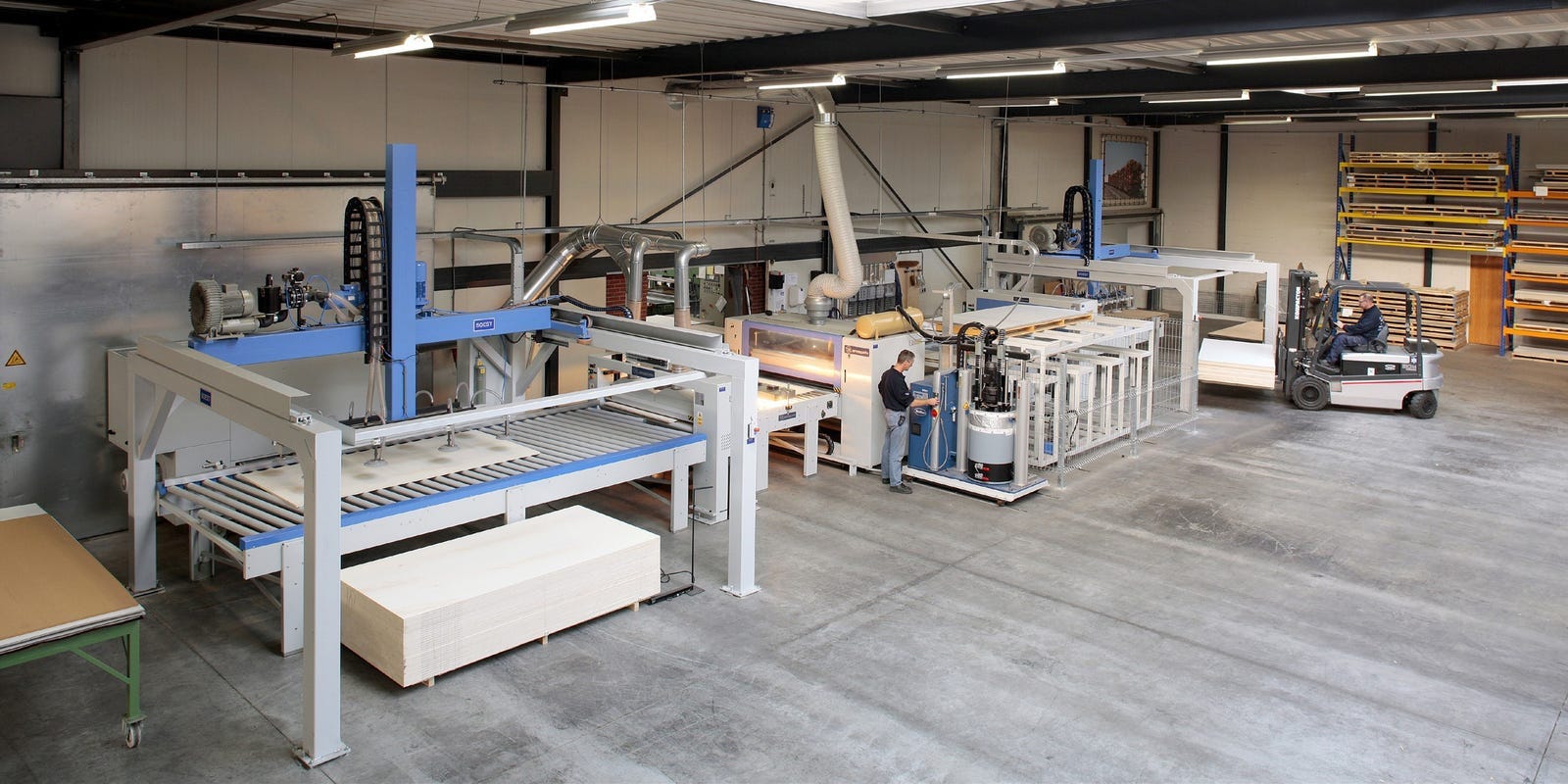
Unlike many other manufacturers, we use PUR Hotmelt bonding (for HPL and acrylic) and Kaurit (veneers) for our Queenply lightweight panels, not white glue. There are several reasons for this:
1. With PUR hotmelt gluing, the panel is heated before the glue is applied. The glue itself is also heated. Therefore, the glue grips better. In principle, PUR does niche require water and therefore introduces less moisture in its own. This minimises tension in the panel. This is different with white glue.
2. The PUR only reactivates again at approx. 135 degrees Celsius. White glue already at approx. 60 - 70 degrees. The lower this temperature, the more problematic for the panel and the bond with the surface, because: if an adhesive reactivates, bubbles form or the HPL or acrylic decor peels off. And now think about it: how quickly do you reach 60 degrees in a vehicle, whether due to climatic conditions or heat sources in the interior (auxiliary heating, water vapour when cooking, etc.).
3. Due to its properties, PUR is 100 per cent waterproof. Shower cubicles and kitchen extensions with our Queenply composite elements are therefore no problem. The surface does not peel away from the panel, nor does the carrier panel itself swell. There are also other moisture-resistant glued plywoods. However, only very few of them also glue the core panel to the HPL or acrylic using the PUR hotmelt process to a high quality. But this is precisely the most common weak point in other lightwood panels.
Veneer in the campervan?

Yes, absolutely! Or do individual van feeling and furniture fronts in the quality and look of a furniture discounter go together? No, right?
So why not veneer? Veneered surfaces are not only absolutely unique and always one-of-a-kind in the world, they are also partly moisture-regulating with an oiled surface. This is because veneered surfaces are more open-pored than HPL and can thus absorb and release moisture to a certain extent.
In addition, veneer is significantly lighter (approx. 50%) than HPL. This saves you further weight in the camper van extension.
But above all it is soo chic and unique!
That’s why we have two queens in our shop: the 15 mm Queenply veneer for furniture construction and the 4 mm Queenply veneer for wall and ceiling panelling.
What can the untreated Queenply be used for?
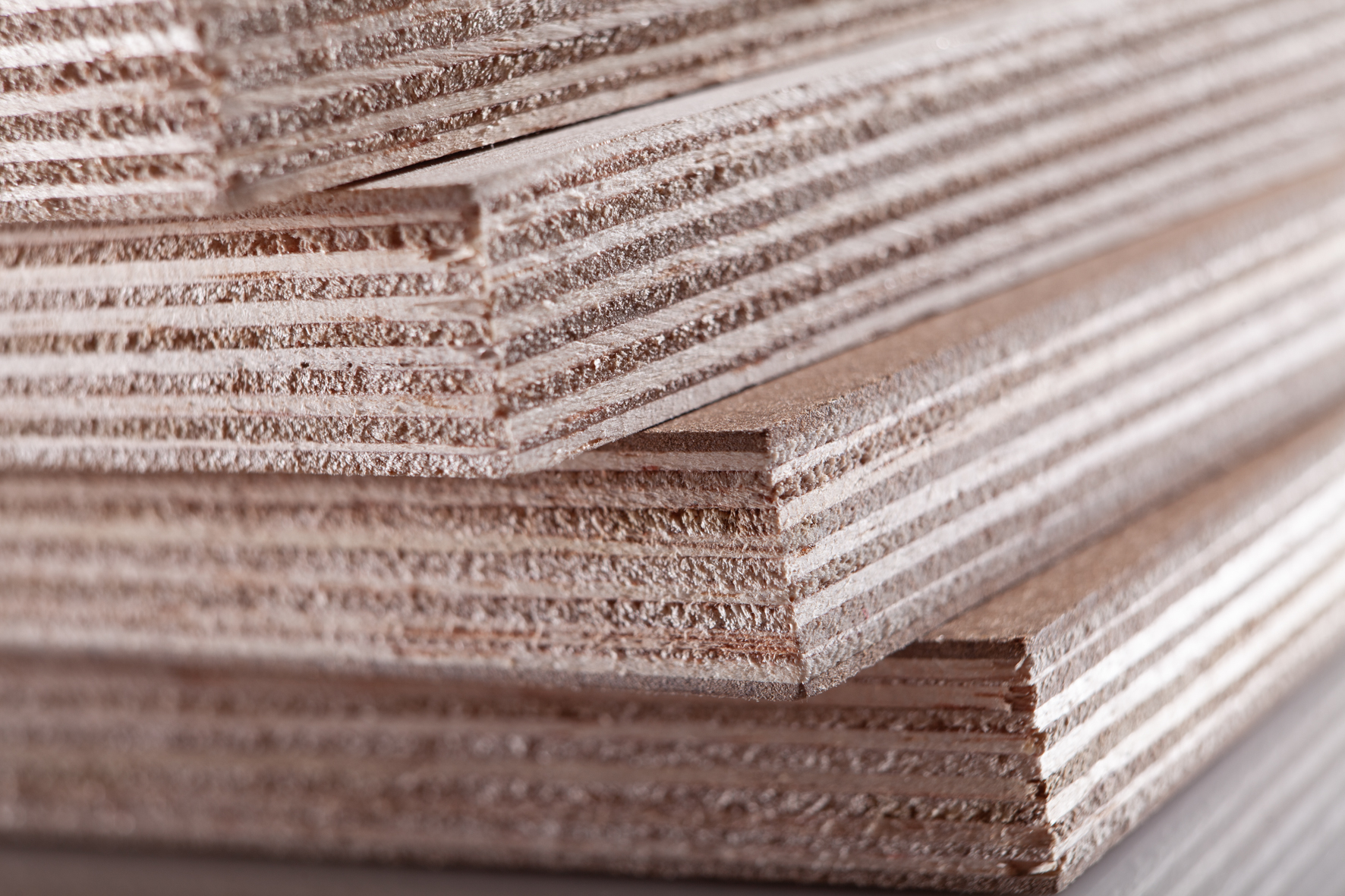
Perhaps you have already seen it: our Queenply multiplex board is also available in our shop completely untreated, in different sizes. It is, of course, the most cost-effective version, because there is no HPL or veneer. However, this version is only suitable for substructures or other constructive purposes, for felting or other coverings. These plywood panels do not fulfil any decorative requirements.
We have them in our scheme because we want to offer you the best technical advantages and the lightest panels in Queenply quality from the substructure onwards. For furniture fronts, we have a whole range of veneered and compound elements in stock.
What freight costs do I have to plan for? How can I minimize the costs?
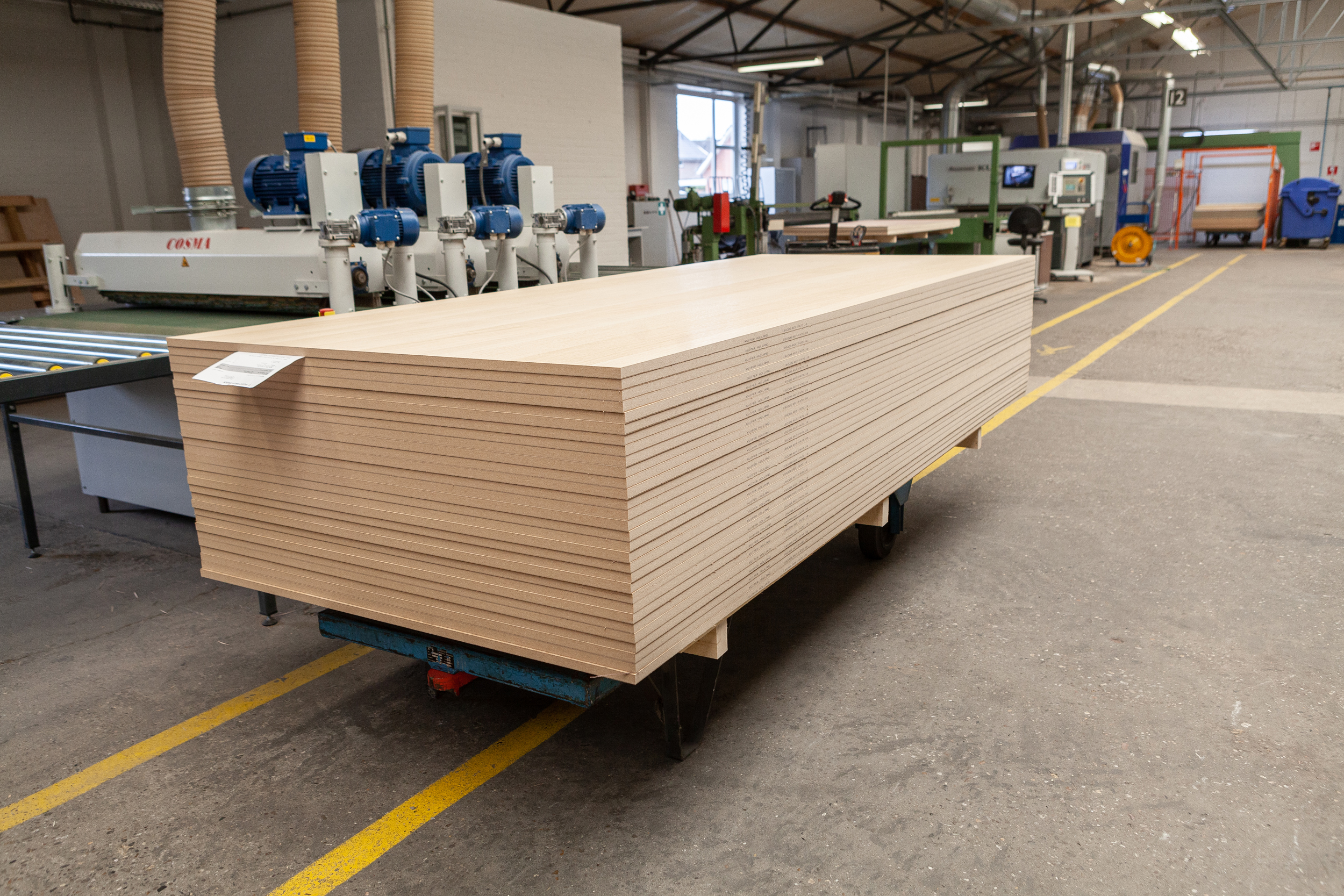
In our planning, we have taken care to keep the freight costs for you as low as necessary and the service as high as possible.
The result: our Queenply shuttle service. With this service we deliver your order directly to your doorstep. And you save up to 500€ transport costs.
You can find all further information under: Freight costs
You can also minimize costs by joining forces with other builders from your region and placing a collective order.
Simply register in our Facebook group. Here we have our own community. There you can find out who else in your area would like to place an order.
Even the Queen has her moments …
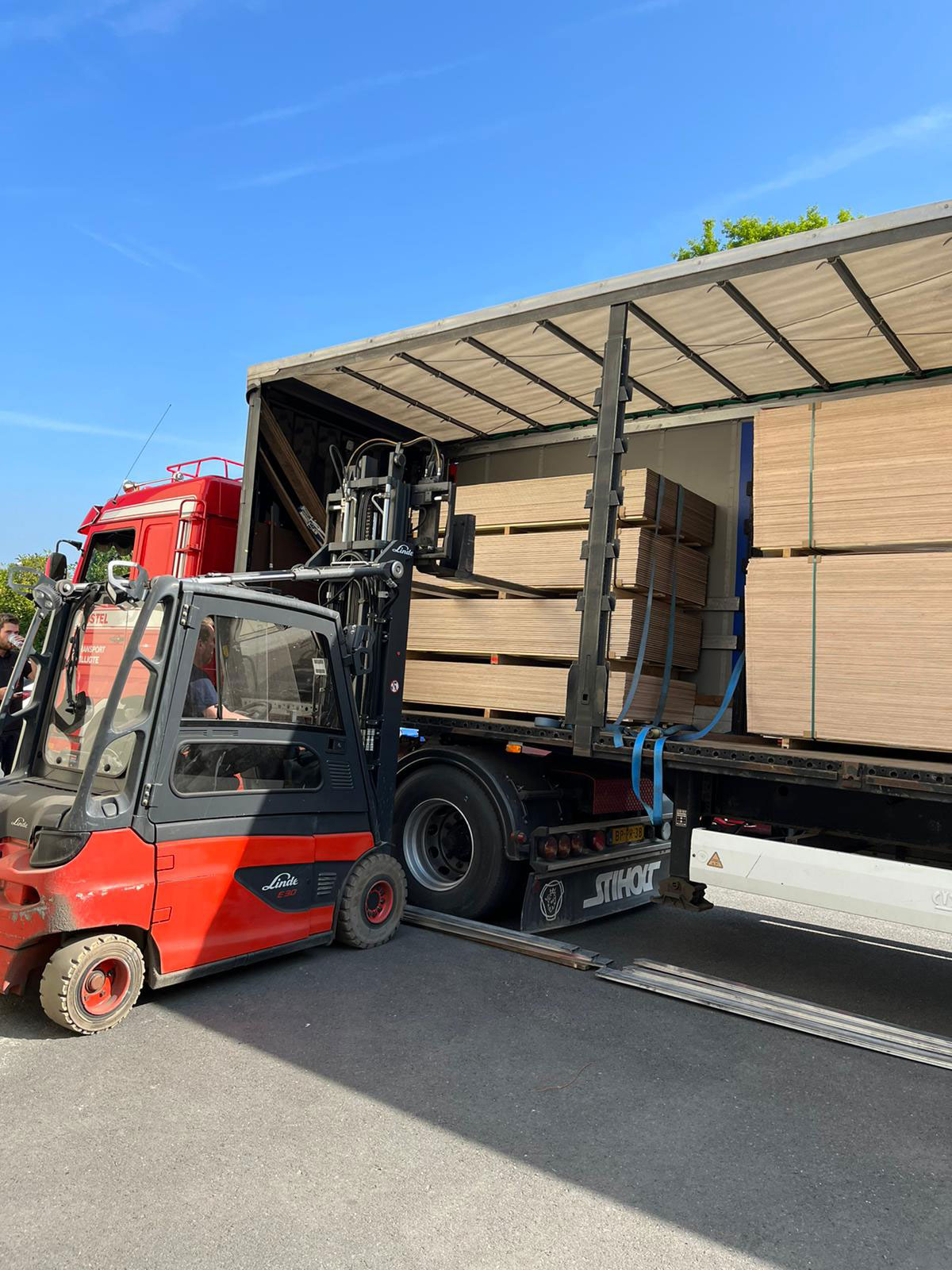
We pack your finishing boards with special care before shipping and make sure that they leave our warehouse without any damage to the edges. However, even with the greatest care, it can happen during transport that a corner is dented or the edge is slightly damaged. We know that too.
That’s why we calculate 1 cm less for each side of every Queenply finishing board in advance: 249 cm × 121 cm for the raw board, 243 cm × 121 cm for all composite elements and 247 cm × 120 cm for all veneered boards. This saves us all a lot of time that would otherwise be wasted on complaints.
Put this time into your extension work – and feel free to recommend us to others.
Musst Du beim Arbeiten mit Queenply auf Arbeitsschutz achten?
Auf jeden Fall. Unsere Queenply wird aus Albasia-Holz gefertigt. Dieses Holz wächst schneller, wird nachhaltig angebaut, ist aber auch feiner als Pappel oder Birke. Deshalb kommt es beim Arbeiten mit Queenply zu deutlich feinerer Staubbildung. Damit Du die feinen Späne nicht einatmest oder in die Augen bekommst, solltest Du auf jeden Fall eine Schutzbrille und eine Atemschutzmaske tragen. Und wer sägt oder fräst… braucht auch etwas auf die Ohren.
Musst Du für unsere Queenply besonderes Werkzeug benutzen?
Unsere Queen ist leichter als andere Sperrholzplatten, bearbeiten kannst Du sie aber mit dem gleichen, gewöhnlichen Werkzeug wie andere Sperrholzplatten auch. Ob Stichsäge, Tauchsäge, Kreissäge, Fräser, Bohrmaschine oder CNC – und je nachdem, was Du mit Deiner Queenply vor hast. Aber lies Dir auch die anderen Verarbeitungstipps hier in unserem FAQ einmal durch. Hier bekommst Du viele zusätzlich Hinweise.
Tipp: Eine Führungsschiene kann Dir gerade bei längeren Schnitten die Arbeit immens erleichtern!
Welches Sägeblatt eignet sich für saubere Schnitte?
Vielleicht für Dich selbstverständlich, in jedem Fall aber ganz wichtig: Das von Dir ausgewählte Sägeblatt sollte auch zu Deinem Werkzeug passen. Und egal, welche Art Säge Du nutzt, es gilt: Ein frisches, scharfes Sägeblatt macht bekanntlich die besten Schnitte! Daher achte darauf, dass du keine stumpfen Sägeblätter verwendest.
Für Sperrhölzer gibt es spezielle Sägeblätter. Diese eignen sich am besten. Metallsägeblätter – sagen unsere Profikunden - funktionieren auch sehr gut und bleiben etwas länger scharf. Im direkten Vergleich machen sie aber im Ergebnis keinen besseren Schnitt als die klassischen Sägeblätter für Sperrholz.
Viel wichtiger ist, dass Du auf eine feine Verzahnung und möglichst viele Zähne bei der Auswahl des Sägeblatts achtest.
Und ein Tipp: Mach am besten zuerst einen Probeschnitt in ein Opferstück. Dann siehst Du direkt, wie sich das neue Sägeblatt verhält.
Wie lässt sich ein Ausreißen der Oberflächen beim Sägen verhindern?
Um ein Ausreißen zu verhindern, solltest Du drei Punkte beachten:
- Achte auf die Umgebungstemperatur, während Du arbeitest. Je kälter es ist, desto poröser werden vor allem unsere HPL- und Acryloberflächen. Sorge also für eine angenehme Umgebungstemperatur für Deine Queen.
- Säge langsam, ohne viel Druck und erst mit voller Drehzahl.
- Nutze das richtige Sägeblatt (siehe hier im FAQ).
Unser Profi-Tipp: Wenn Du im Vorfeld ein Klebeband entlang der Schnittkante anbringst und beim Sägen eine Führungsschiene mit Gummilippe benutzt, bekommst Du noch schönere Schnitte hin.
Queenply lieber schrauben, dübeln oder kleben?
Das bleibt ganz Dir überlassen. Du hast mit unserer Queenply alle Möglichkeiten, denn alle drei Optionen funktionieren super. Eine Kombination ist natürlich – gerade beim Vanausbau, wenn es später mal neben der Straße hergeht - am sichersten. Für alle anderen Möbel- und Innenausbauten gilt: Wähle einfach die Optionen, die für Dich am besten passen.
Welche Schrauben sind gut geeignet?
Unsere Queenply ist – auch wenn sie sich in Gewicht und Stabilität deutlich von anderen Sperrhölzern abhebt – ein Sperrholz. Daher eignen sich zum Verschrauben Sperrholz-Schrauben am besten. Schrauben mit Teilgewinde bieten dabei die beste Anziehung, Schrauben mit Vollgewinde geben den besten Halt. Senkkopfschrauben kannst Du bündig im Holz versenken, Flachkopfschrauben geben einen besonders edlen Look. Da hast Du die Wahl.
Wichtig: Besonders bei HPL- und Acryloberflächen raten wir Dir, vorzubohren. Nutze dafür einfach einen Bohrer, der eine Nummer kleiner ist als Deine Schrauben. So stellst Du sicher, dass die Queenply nicht splittert und die Schraube einen guten Halt findet.
Unser Profi-Tipp: Viele unserer Partner nutzen gewöhnliche SPAX-Schrauben, teilverzinkt oder aus Edelstahl. Setzt Du die ein, kannst Du Flugrost und unschöne Verfärbungen vorbeugen.
Womit Du Queenply am besten verkleben oder verleimen kannst?
PU - Konstruktionskleber, MS Polymerklebstoffe oder Multifaserklebstoffe haben sich in der Praxis bisher gut bewährt. Auf jeden Fall muss der verwendete Kleber/Leim zu den jeweiligen Werkstoffen passen, die Du miteinander verbinden möchtest. Logisch. Unabhängig davon, welchen dieser Kleber Du verwendest: Beachte bitte immer die Gebrauchsanweisungen auf der Verpackung!
Für alle Klebeverbindungen gilt: Eine fettfreie, saubere und trockene Oberfläche lässt sich am besten verkleben. Bei sehr glatten Oberflächen, wie unseren HPL- oder Acryloberflächen, empfehlen wir Dir, die Klebestellen mit einem groben Schleifpapier anzurauen. So hat der Kleber bessere Haftung.
Tipp zur Verklebung von HPL- oder Acryloberflächen: Die stärkste Klebeverbindung erhältst Du, wenn Du den jeweiligen Schichtstoff an der Klebestelle einfach mit einer Oberflächenfräse vorsichtig entfernst.
Welche Pflegemittel eignen sich für Queenply-Holz? Wie lässt sich Queenply – Holz bestmöglich schützen/pflegen?
Unsere Queen mag qualitativ hochwertige Pflegemittel. Ob Du Öl, Wachs oder Holzlasur verwendest, bleibt Dir überlassen. Vor der Einarbeitung solltest Du die Holzoberflächen leicht anschleifen und dann das Pflegemittel Deiner Wahl auftragen. Mit einigen Pflegeprodukten kannst Du Holzfarbe oder -struktur noch ein wenig beeinflussen. In unserem Onlineshop findest Du übrigens von uns empfohlene Pflegemittel.
Wichtig: Teste Dein Pflegeprodukt vorher an einem Opferstück. So erkennst Du, wie das Endergebnis auf Deinen Leichtbauplatten aussehen wird. Beachte bitte immer auch die Gebrauchsanweisung und die Trocknungszeiten.
Unser Profi-Tipp: Die meisten Pflegeöle bringen eine eher satte Holzfarbe zur Geltung. Wachs betont besonders die Holzstruktur. Pflegelasuren gibt es in ganz unterschiedlichen Variationen.
Für die Van- und Yachtausbauer unter Euch: Wie lassen sich gebaute Möbel am besten an Decken oder Wänden befestigen?
Eine stabile Unterkonstruktion ist das Wichtigste. An dieser kannst Du dann anschließend Deinen Innenausbau und die Möbel befestigen. Dafür eignen sich z.B. Einnietmuttern, entsprechende Kleber (siehe FAQ - Kleben) oder Rampamuffen für die Bodenplatte.
Zum Bau stabiler und gleichzeitig leichter Unterkonstruktionen haben wir übrigens unbehandelte Queenply - Platten bei uns im Shop.
Wichtig: Auch Unterkonstruktionen sollten versiegelt werden, denn sie haben meist einen direkten Kontakt zur Außenwand bzw. zur Karosserie. Hier kann sich Kondenswasser bilden.
Tipp: Denk an eine gute Dämmung, denn die ist Gold wert. Eine dünne Dämmschicht zwischen Karosserie oder Außenwand und Unterkonstruktion lässt Feuchtigkeit gar nicht erst ans Holz ran.
Eignet sich Queenply auch zum Bau einer Nasszelle?
Für HPL- und Acryloberflächen ein klares Ja. Es ist allerdings sehr wichtig, dass Du darauf achtest, dass kein Spritzwasser oder Luftfeuchtigkeit in direkten Kontakt mit der Trägerplatte bzw. dem Holz der Trägerplatte kommt. Eine HPL-Beschichtung auf dem Holz ist daher gut geeignet für den Bau einer Nasszelle: robust, kratzfest, wasserabweisend und langlebig. Acryloberflächen sind ebenfalls machbar, aber aufgrund ihrer Oberflächenbeschaffenheit etwas anfälliger gegen Kratzer und aggressivere Pflege- und Putzprodukte. Das solltest Du Dir also besser nochmal überlegen.
Wichtig ist und bleibt: Vermeide sichtbare Holzkanten und versiegle diese zur Sicherheit immer im Vorfeld. Ecken und Kanten solltest Du mit einer Dichtungsfuge versehen. Achte dabei bitte auf einen flexiblen Klebe- und Dichtstoff. Sollten nach einiger Zeit erste kleine Risse in der Fuge entstehen, so arbeite diese einfach nach.
Ist Queenply auch für den Außenbereich / outdoor geeignet?
Bietet Ihr auch Zuschnitte an?
Wir ermöglichen so viel Service wie möglich. Einen Zuschnittservice haben wir allerdings nicht. Bei der Menge an Leichtbauplatten, die jeden Tag bei uns ein- und ausgehen, sind individuelle Zuschnitte leider nicht umsetzbar.
Unser Tipp: Du kannst Deine Platten bei einem Schreiner / Tischler bei Dir um die Ecke zuschneiden lassen. Viele unserer Kunden haben damit gute Erfahrungen gemacht.
Welche Größe haben die Queenply Vollformatplatten?Passen die Platten ins Auto?
Unser Vollformatplatten haben die Circa-Maße 250 x 120 cm, je nach Variante. Die genauen Maße Deiner bestellten Leichtbauplatte findest Du bei uns im Shop immer angegeben. Grundsätzlich passt die Queenply daher in jeden kleinen Lieferwagen oder Kleinbus.
Tipp: Du kannst Dir Deine Bestellung auch kostengünstig per Shuttle-Service bis vor die Haustür liefern lassen. Dann hast Du mit dem Verladen gar keinen Stress. Schau Dir das Angebot bei uns im Shop unter „Frachtkosten“ einfach mal an. Vielleicht hat sich diese Frage für Dich dann schon erledigt.
Wie sollte man die Queenply – Platten am besten lagern?
Gibt es besondere Rabattaktionen oder Specials im PLATTENLADEN?
Wir bieten immer mal wieder besondere Aktionswochen oder Rabattaktionen an. Besondere Deals für Profiausbauer und Geschäftsfkunden oder auch interessante und lohnenswerte Aktionen für alle DIY’ler.
Auf unseren Social Media-Plattformen findest Du alles, was Du dazu wissen musst. Folge uns gern für Tipps und Tricks rund um die Verarbeitung der Queen und bleibe auch so immer auf dem Laufenden über unsere besonderen Aktionen.
Deine Frage war nicht dabei?
Dann immer her damit. Schreib uns einfach über einen unserer Social-Media-Kanäle. Wir melden uns.
Tipp: in unserer FB-Gruppe tauscht sich die Queenply-Community über alle aktuellen Themen aus.
Komm‘ gern dazu – Du bist herzlich willkommen.
Fahrzeug-Innenausbau: Holz und mehr
